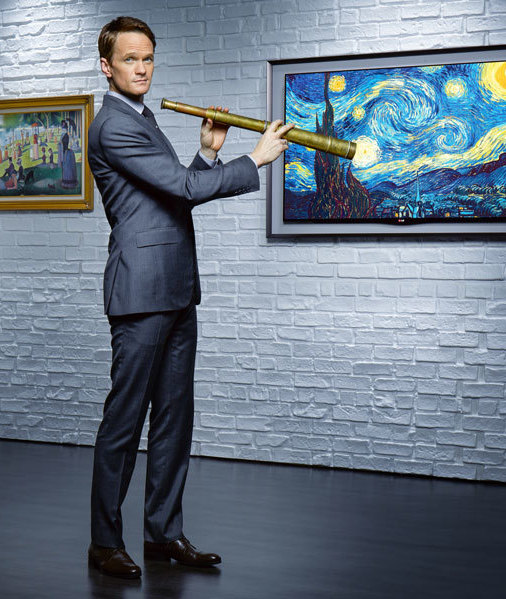Neil Patrick Harris Talks About Digital Art, PNCA, Hedwig, HIMYM, and Why Actors Need Good Dermatologists

The purpose of the competition is to promote LGs new Ultra HD TVs as a canvas for the budding digital artists. Because it’s a major brand, it seems LG wanted a major celebrity spokesman for the competition: Emmy- and Tony-winner and art collector Neil Patrick Harris. He offered advice for the finalists during a Google Hangout.
I got a few minutes via a terrible phone connection to talk with Harris about the contest, Summerson, why actors need good dermatologists, and the digital artform in general.
How did you get involved in the Art of the Pixel?
LG reached out to me because they know I’m a fan and proponent of art—David [Burtka, Harris’s fiancé] and I have a nice contemporary art collection—and they wanted to involve me in this competition. I thought it was a good fit: technology plus education plus art.
Do you collect digital art yourself?
Not so much, to be honest. We mainly have watercolors and works on paper. I’ve never felt that digital art was worth collecting, given that the technology wasn’t able to catch up with the design elements of it. Digital art’s hard—and even in the last 5 or 10 years—because the size of the technology you needed was cumbersome: either a giant TV or a giant projector.
Now that screens are getting smaller and flatter and more resolution, it’s making it easier to watch. Actually, we just bought a Jennifer Steinkamp piece that’s a projection of digital art that I got for David for Valentine’s Day, so I guess we have one piece.
How many of the submissions did you watch? What did you think of the work?
I looked at a few of them. I was really just impressed by the crazy cross-section of it all. We had some real photo-realistic things, some things that were more abstraction, some video game–style imagery, but also some really nice simpler ones. I was impressed; I thought it would be uniformly more busy.
What did you think of PNCA finalist John Summerson’s Painting From Life (view the video here)?
I liked John’s piece. I thought it was calm, and I liked the music he chose. And he had the watercolors that turned into stop-motion. I enjoyed the subtleties of having the sheets on the desk in motion as well. I thought it was very clever.
Has digital art or advances in digital technology influenced or affected your own acting work?
I don’t think it’s affected the way I perform, but it’s certainly affected the way people accept jobs now. I mean, that’s across the board. It’s the convergence of Netflix, Amazon, and Hulu all creating their own series with impressive numbers, and you get fantastic actors being involved in smaller, amazing projects.
Not to mention being seen in ever increasing detail. It seems to me increasing HD must be a bit frightening for actors: every pore grows more and more visible.
Yeah, you can certainly see every little thing. But that’s why it helps to have a good dermatologist.
You went from hyper heterosexual playboy Barney Stimson in How I Met Your Mother to playing the transgender rocker Hedwig on Broadway, which closed a couple weeks ago. Who was more fun to play?
Wow, that’s a real apples to oranges question, since they were so vastly different in every way, not only in character but also in skillsets. I think Hedwig as a singular piece is really exciting to do night after night, whereas Barney’s veracity, although in many ways similar to hers, was only done a few times, but there were a lot more scenes. It was mining new stuff for every performance as opposed to honing in on one singular idea.
I know there was some hesitation before it opened or even reached the stage that Hedwig was too racy for Broadway. Did you think it would have the legs that it’s had?
I was intrigued to see how an audience was going to respond to it and was delighted by the almost uniform welcome that it received night after night. I thought people might’ve been more conflicted about the storyline, but it’s got a real universal appeal: the idea of looking for completion in love rings true with most people.
Would you say it changed you as an actor or challenged you in ways you hadn’t been challenged?
Yeah, it was certainly challenging in almost every way. But I feel like most jobs, if you’re committed to them, then you’re working hard to get that change in you in overt and subtle ways as well. There’s different postures, different vocal inflections, different principles you can stand on.
What’s next for you?
Next I’m just going to rest for a bit. I’ve been working pretty consistently for the last half a dozen years, and I’ve loved it. But I have a family and we’ve moved to a new city, and I’d really like to plant some roots and take a breath.
